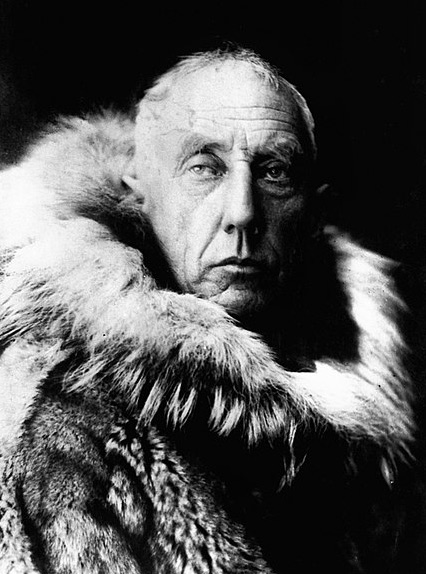
Roald Amundsen was born on July 16, 1872, into a family of shipowners and captains in Borge, Norway. When he was 15 years old, his interest in exploration was ignited by his reading of the adventures of Sir John Franklin who had voyaged through the Arctic in search of the Northwest Passage. Though his mother discouraged this interest and encouraged him to become a doctor, when she died in 1893, Roald changed course, and dropped out of university to pursue a life of exploration.
In 1897, when Roald was 25 years old, he joined the Belgian Antarctic Expedition as first mate. However, during the early winter, the ship, the RV Belgica became trapped in the sea ice and he and the rest of the crew became the first to people to winter in Antarctica.
In 1903, Roald Amundsen pursued his childhood dream and lead an expedition to find the Northwest Passage, through Canada that connects the Atlantic and Pacific Oceans. He captained a small 45-ton fishing vessel with a 13 horsepower diesel engine and a crew of 6 men. The long voyage through Baffin Bay, the James Ross Strait and the Simpson Strait brought them to King William Island late in 1903. Amundsen and his crew stayed on King William Island through the spring of 1904 with the Inuit who taught them Arctic survival skills. What they learned from the Inuit would to serve them well in the future when they would compete with Robert Falcon Scott in a race to the South Pole.
In August 1905, Amundsen and his crew reached Nunavut, but ice that came in September blocked their further progress and they were forced to winter in 1905-06 at Herschel Island in the Yukon. Finally, in August 1906, the expedition completed its objective, arriving in Nome, Alaska to a heroe’s welcome.
Following this triumph, Amundsen planned an expedition to the North Pole, but on learning that it had already been reached by the Americans, Frederick Cook and Robert Peary, he switched his plans for an expedition to the South Pole. This put him in direct competition with the English explorer Sir Robert Falcon Scott who had previously announced a similar intention. Amundsen sent a brief telegram to Scott alerting his competitor to his change of plans.
Amundsen and his crew left Oslo, Norway on June 3, 1910 and on January 14, 1911, (Antarctic summer) arrived at the Bay of Whales. Wearing clothes made from animal skins (something they learned from the Inuit) they crossed land using 4 sledges drawn by 52 dogs. To provide food for themselves and the dogs, they butchered some of the dogs as they went and by the time they reached the South Pole on December 14, 1911, there remained only 16 dogs.
Amundsen and his crew erected a small tent and an announcement tantamount to “Kilroy was here,” that Scott’s expedition found when they arrived a month later. Amundsen was credited with leading the first expedition to reach the South Pole–a landmark event in the history of exploration. Scott’s expedition, fraught with a variety of problems, including a lack of supplies, was unable to return from the South Pole and perished in the brutally cold weather of the Antarctic.
On June 18, 1928, Roald Amundsen was involved in a rescue mission for the airship Italia that had crashed when returning from the North Pole. However, he never returned and was presumed dead at the age of 56. His contributions to polar exploration are significant, and he is remembered as one of the greatest explorers in history. His meticulous planning, innovative use of technology, and deep understanding of the harsh environments he explored, set him apart and ensured his place in the annals of exploration history.
